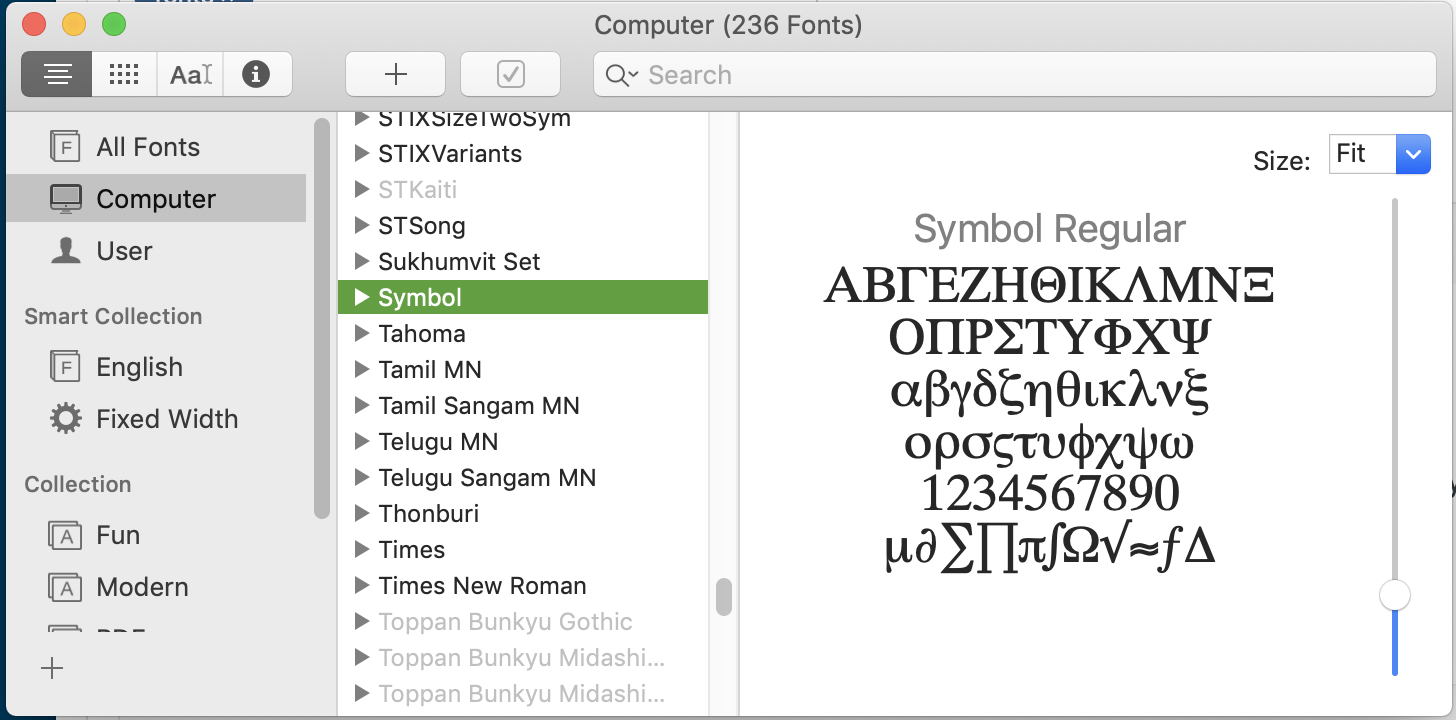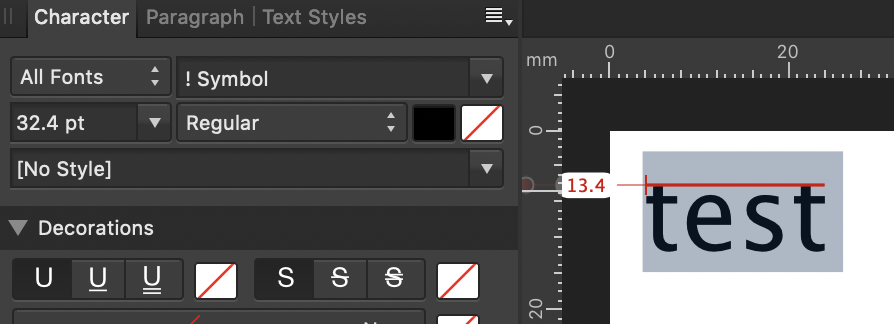
ateleman
Members-
Posts
14 -
Joined
-
Last visited
Recent Profile Visitors
The recent visitors block is disabled and is not being shown to other users.
-
 Samborlang reacted to a post in a topic:
Copying and pasting into/out of channels more intuitively
Samborlang reacted to a post in a topic:
Copying and pasting into/out of channels more intuitively
-
Hi ! I run a lab with 15 people and everyone has Affinity Photo version 1 on their laptops. Now a new person has joined and we've installed version 2 on his computer. Are you seriously saying that he will not be able to share his files with the other 15 people in my lab??? There really needs be a way to export a version that is backwards-compatible. This is a game-stopper if I need to update all 15 licenses in my group every time a new version comes out. I guess a solution is an export function that strips the new features from the file...
-
 angelhdz12 reacted to a post in a topic:
Layer Sort / Sorting Follow up
angelhdz12 reacted to a post in a topic:
Layer Sort / Sorting Follow up
-
 Wosven reacted to a post in a topic:
Copying and pasting into/out of channels more intuitively
Wosven reacted to a post in a topic:
Copying and pasting into/out of channels more intuitively
-
Layer Sort / Sorting Follow up
ateleman replied to angelhdz12's topic in Feedback for Affinity Photo V1 on Desktop
Indeed this works in Affinity Design, but it's not available in Affinity Photo... But thanks for the tip. I'll do those types of adjustments in Affinity Design instead... -
Layer Sort / Sorting Follow up
ateleman replied to angelhdz12's topic in Feedback for Affinity Photo V1 on Desktop
I agree ! It would be great if it were possible to sort and/or select layers based on the layer type (e.g. all pixel layers, or all Rectangle layers, all text layers, etc). For instance, if I paste a graph from Graphpad Prism into an AP file, I end up with hundreds of layers (e.g. one for each data point in the graph) and would like to change their color all in one go... I see this has been requested a lot, but in the wrong forum: -
Binarizing a selection
ateleman replied to ateleman's topic in Pre-V2 Archive of Desktop Questions (macOS and Windows)
I would like to select based on a sampled color. This can't be done on a thresholded/binarized image... So I think first thresholding and then selecting won't work. I believe I need to first select based on a sampled color, and then threshold the selection... -
Hello, If I have a pixel selection, some regions are fully selected (ie white in the mask channel), some regions are not selected (black), and some regions are partially selected (e.g. if you do Select > Colour Range > Select Reds, and these regions have greyscale values in the mask layer). The 'marching ants' shows me the region where the pixel selection is above some threshold (50%?). Is there some way to binarize the selection so that all pixels that are selected above a certain threshold become fully selected (white) and all pixels below that amount become not selected (black) - e.g. leaving in the selection only the regions surrounded by the marching ants and removing the rest from the selection? Thanks !
-
I think that what ImreLovasz means is that, although the approaches you showed in AP work well, and I'm grateful for that (I'll be using them a lot !!), nonetheless it could be a bit more streamlined/simple. In Photoshop, if I want to copy a region in a picture from only 1 channel, it only takes 3 clicks: 1) I select the channel, 2) I mark the region I want to copy, and 3) I press command-C. Done. With AP, I need to first create a grayscale layer from the channel. It's a bit more cluncky, but not much. (Plus, logically, what's the point of being able to select a single channel if then the actions you do are not restricted to that channel?) But as I said, the current solution works...
-
 ashf reacted to a post in a topic:
Copying and pasting into/out of channels more intuitively
ashf reacted to a post in a topic:
Copying and pasting into/out of channels more intuitively
-
I'm used to using Photoshop where I find that some of these manipulations mentioned below were solved more intuitively, and wonder if this could be improved in Affinity Photo (which is great!): I'm a scientist, and often obtain several single-channel/grayscale images from a CCD camera or a microscope (ie an 8-bit grayscale image), which I then need to combine into a single RGB image. So basically I start with two grayscale/single-channel images and I want to put one into the green channel of an RGB image, and the other into the blue channel of the RGB. With Photoshop, it was easy: I would first convert one of the grayscale images into an RGB. Then I would click on the other grayscale image and 'copy' it. Then I would go back to the RGB image, select the red channel and delete (because in this case, for instance, I don't need it), then click on the blue channel, 'paste', and be done. (ie the copied grayscale image would be pasted into the blue channel only). This approach does not seem to work in Affinity photo. Instead, I found the following solution: 1. open the two single-channel TIFF files in affinity photo 2. convert one to RGB by going to Document > Convert Format / ICC profile and then select RGB/8 as the color format 3. click on the ‘Channels’ panel. 4. Select the channel you want to delete (e.g. Composite Red), then use the markee tool to select everything, and hit the delete key. (Selecting everything with “Select All” / Command-A will cause everything to be deleted). 5. Go to the other file containing the grayscale image that you want to paste into one channel of the RGB image, copy, then go to the RGB, click on “Layers” and paste. This should create a new layer with a black & white version of the channel you want to add. 6. Make sure you select this new layer in the ‘layers’ panel, then click on ‘channels’, select the channel you want (e.g. blue), right-click and select “create spare channel”. 7. Go back to the ‘layers’ and delete the new layer that you added in step 5 8. Go back to ‘channels’, right-click on the spare channel (which is still there after deleting the original layer) and select ‘load to Background blue’. 9. In the upper right corner of the ‘channels’ panel is an arrow that goes around in a circle. Click on this to ‘reset’ and see all the channels. Since I am fairly new to AP, there might be a faster/easier way to do this? If so, I would be happy to hear about it ! Otherwise, I would suggest the following change to make it more intuitive to work with channels: if I select only one channel for editing, then all copy/paste/delete operations should apply only to this channel. (Otherwise, what's the point of having the other channels not selected for editing?) Currently, in AP, the following things seem un-intuitive: 1. if I select only one channel for editing (e.g. "Composite Red") and do "Select All" and hit delete, then the entire layer gets deleted (ie all three channels), rather than only deleting the information from the red channel. The work-around for this currently is that selecting everything with the markee, rather that saying 'select all', works. 2. if I have only one channel selected, and then click 'copy', for some reason the entire layer (ie all three channels RGB) gets copied into the clipboard. Instead, I would suggest that if only one channel is selected, then only the information from that one channel should be copied, yielding an 8-bit grayscale image in the clipboard. 3. if I have only one channel selected, and I paste from the clipboard a single-channel 8-bit grayscale image, then for some reason this image gets pasted into all three channels. I would suggest that the data from the single-channel image in the clipboard should only go into the single selected channel. I think these changes would make it much easier to both split channels and combine channels to make RGB images... Thanks !!
-
I see - thank you ! (Some info for other users in case anyone else bumps into this same issue: If I understand correctly, for some reason most other programs do the 'incorrect' thing: I wanted an 'alpha' which is Unicode U+03b1 in the Symbol font. In most programs, this appears on the screen when you type an 'a' on the keyboard using the symbol font. However, keyboard 'a' should actually correspond to unicode U+0061... So I guess programs like Microsoft Word somehow translate the user's intention..) Thanks for the quick reply !
-
Hello, I'm working with Affinity Photo 1.8.6 on a Mac running OS 10.14.6 I have the 'Symbol' font installed in the operating system (ie Font Book.app). It's a standard font that always comes with the operating system and is used for greek symbols/letters. Here's a snapshot In all other applications I'm using (e.g. Microsoft Word), the Symbol font is working just fine. In Affinity Photo, the Symbol font does appear in the drop-down font menu when I select "All Fonts" as the category. However, if I type some text, highlight it, then select "Symbol" from the drop-down menu, it doesn't work. Instead, an exclamation mark appears in front of the font name, and on the canvas the Symbol font is not displayed: So somehow it seems that Affinity Photo is having problems accessing this font? Is there any way to fix this? Thanks !
-
Macro: Make pdf export possible
ateleman replied to fdieter's topic in Feedback for Affinity Photo V1 on Desktop
I agree !! I often need to convert multiple files to PDF, and it would be great if the "export to PDF" actions could be recorded in a macro, or if it were possible to "save as PDF" in batch jobs... Thanks !!


